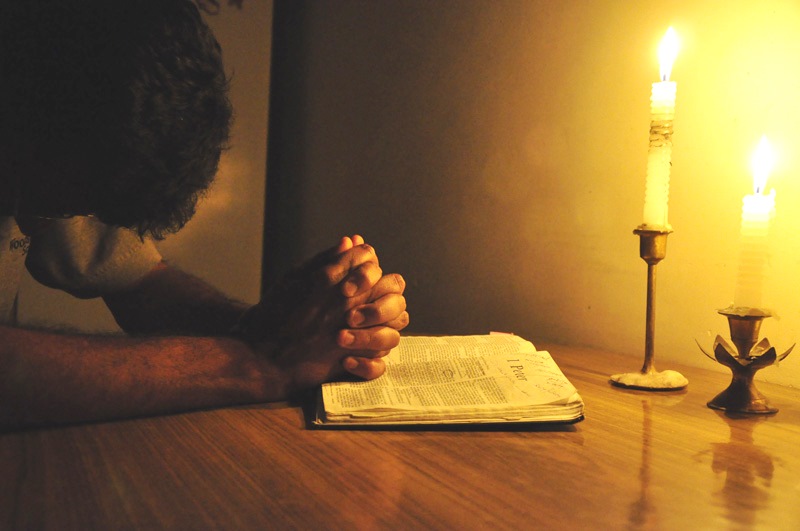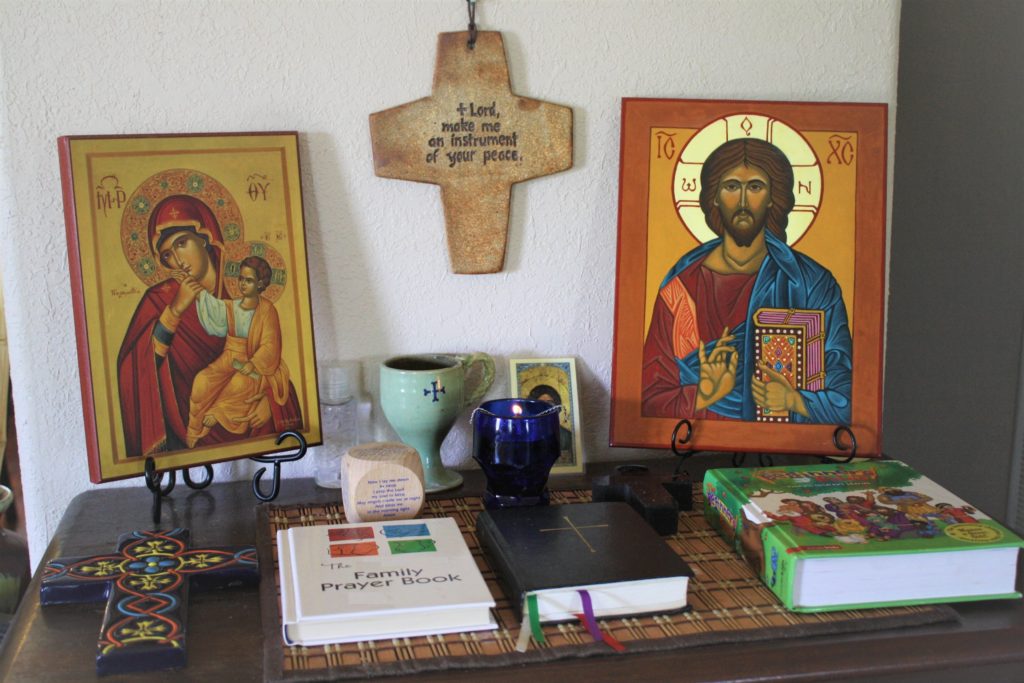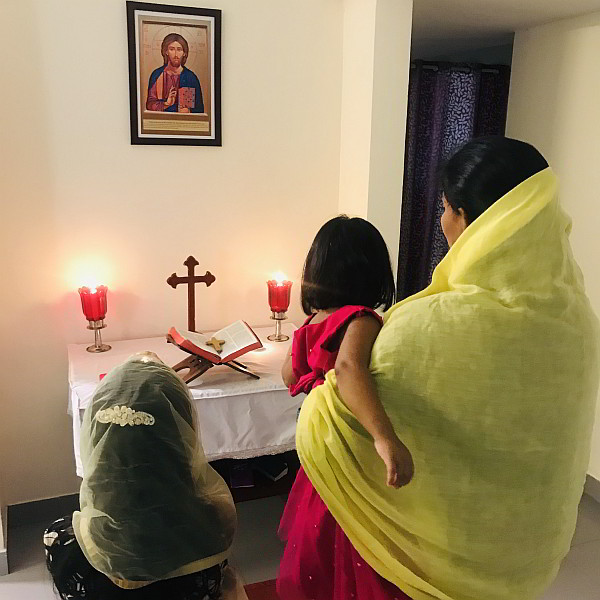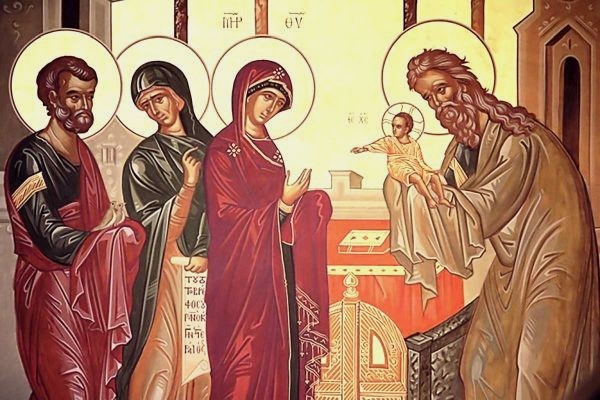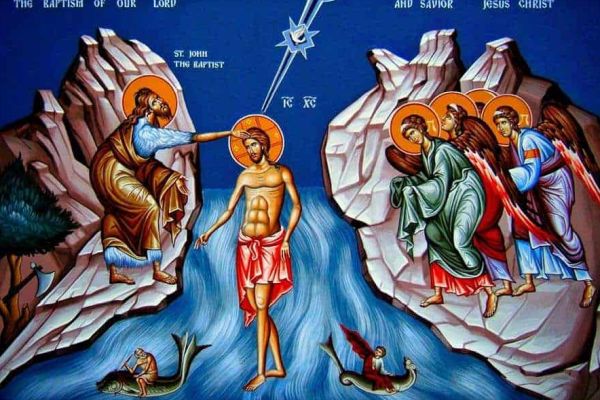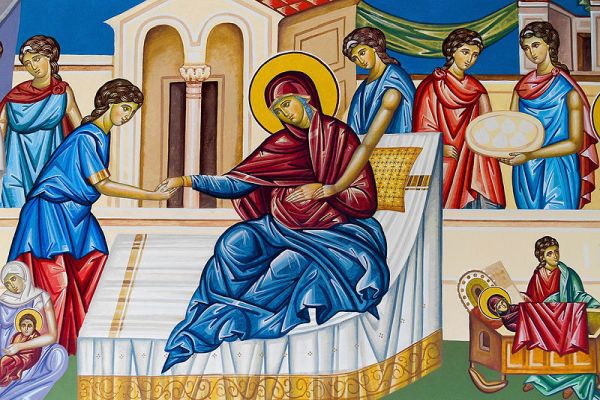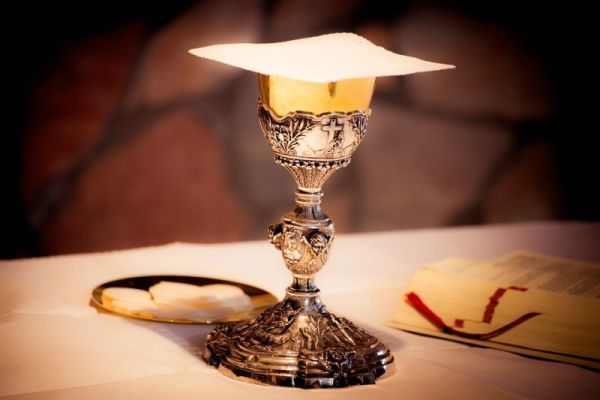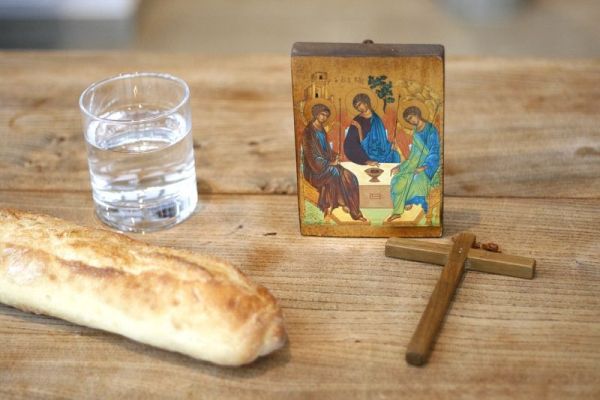Spiritual Disciplines – Prayer
The church gives us a threefold path of prayer, fasting and almsgiving to spiritual growth based on Jesus’ sermon of the mount in St. Matthew chapter 6. These are the 3 foundational disciplines to strengthen our spiritual life and we as Orthodox Christians, give much focus to this during the Season of Great Lent
Prayer has both a communal as well as private side to it. Both are essential and one cannot exist without the other. Communal side is when we gather together as a church, a parish and offer our prayers – like we do for Lenten evening prayers or Divine Liturgy. But it is just as important that we as families have our private prayer.
Our homes are called ‘little churches’; the idea being that they are an extension of the church. In other words, we are to carry over the disciplines of the church to our homes. So then, how do we practice the discipline of prayer at our homes?
So we are going to learn how to set up the prayer altar and practice communal or family prayer at our homes!
A Place for Prayer
If we think about a home, immediately we think about ‘spaces’ for specific purposes. Ex: Kitchen, Bathrooms, Bedrooms, Dining rooms etc. Even if the house is small, we still put a small curtain and separate spaces. It is because everything has its own place and we do different activities in different spaces. In the same way, it is expected and good to have a specific and special place to pray in your house. We shall call it the prayer altar.
Depending on the size of the place you stay, it can be at a corner of your house or even against a wall of the house.
You might be tempted to think that, does it matter where we pray? Won’t God hear anywhere we pray? It is not because God won’t hear our prayers that we choose to pray as a family in front of our prayer altar. But because our homes are little churches and we are visibly declaring that this is the place where we as a family come to meet God.
What makes up a
prayer altar?
Table: Have a small table with good covering cloth. On it place the following items to make it into a prayer altar.
Cross: Have a cross kept at the centre of the table. The Cross is universally the one symbol which tells that we are followers of Christ. It shows us the victory which Jesus Christ has won for us on the Cross of Calvary (Col 2:14-15).
Light: Have one or two candles placed on either side of the cross. This can be lit just before our family prayer times. Physically lighting a candle reminds us that Jesus is the light which came down from heaven to earth. But it is also a reminder that we are called to be the light of the world (Mathew 5:14).
Holy Scriptures: This can be the common place for us to keep our Bibles. This way we can read scripture portions for that day. That is our guideline, our written Tradition to follow (II Timothy 3: 16).
Icons: For Orthodox Christians, an icon is not just a picture. It is a sacred image, a window into heaven. Icons make spiritual realities present to us in a tangible way and help us give focus to our prayers. The most fundamental element of the prayer altar is the Icon of our Lord Jesus Christ. The icon of Jesus makes it clear whom we are offering our prayers and worship to. To the icon of the Lord Jesus, we most often add the icon of Mary, the Mother of God. This is to honor her as the “highly favored one” (Lk. 1:28) who was chosen by God from all generations to give birth to Jesus Christ. Having the icons of saints is also a great way to remind us and inspire us to follow their lives and the example they set for us (Heb 13: 7).
Prayer Book, Song Book & Lectionary: These books can also be kept on the prayer altar to help us in our daily prayers, singing and reading of scripture.
Have a Prayer Routine
Our lives are full of routine. We wake up at a particular time, go to work at a particular time, school starts at the same time each day etc. In the same way, prayer being a discipline, it’s good to set a specific time for it each day and keep the time. So for example if you say everyday 6 pm you will have family prayer, then keep that time.
The early church followed specific times of prayers. We read about the apostles James and John who went to the temple to pray at 9th hour – ie 3 pm (Acts 3:1). St Peter – fell into a trance at the 6th hour i.e. 12 pm (which was one of the prayer times) and Cornelius at 9th hour ie 3 pm saw a vision too. The Jewish people had prayers at 6am, 9am, 12pm, 3pm and 6pm.
Posture
Standing, kneeling and prostrating. We pray not just with our minds, but also our bodies. So during prayer, and especially Lenten prayers, there are specific parts where we prostrate, kneel and stand. In a way, we are telling our bodies that – you are not supreme; but subject to my soul.
Facing East: The church teaches us that it’s good to pray facing east. Which means as far as possible, we choose to set up the prayer altar in such a way that, when facing the prayer altar, we are facing east. But why east? This has two meanings. St. Matthew 24: 27 says – Jesus will come again from the East; so we are reminding ourselves of Christ’s coming back.
In addition, when we face the East, we are facing the Sun or the light and are putting darkness behind us. In this way we are reminding ourselves of Christ the risen Sun of the Church (Rev 22:16).
Maybe you have practised sitting in a circle while praying at home. But then, who are you facing when you pray? Who’s the object of your prayer and worship? When you stand in attention for singing the national Anthem – do you do it in a circle? No we look up and face the flag of our nation.
So now, we have a place to pray, a time to pray, and we are ready to pray with our whole body and mind! Remember, our homes are little churches!
Practical things you can do
• If you do not have the habit of family prayers every day, please start it right away.
• If there is no prayer altar at your home, follow the guidelines you have learned in this lesson and set a prayer altar in the space that is available. Please contact the priest in your parish if you need any practical guidance in setting up the prayer altar.
• Develop the habit of hours of prayer at different times of the day- You can fix a time for family prayer. But during other times of hours of prayer, you can go to the prayer altar individually, if you are at home, pause for a few minutes and spend time in prayer. And if you are away from home for work or other purposes, you still can pause during the hours of prayer and pray to God.
• Our Church has the ‘Prayer at home’ liturgy for the faithful in our parishes. And for the Lent season, we do have the daily Lenten prayers we can use in our homes. If you haven’t received that yet, please contact your priest and obtain a copy in your regional language and start using it during your daily family prayer times.
• Have a list of people that you want to pray for and remember to pray for them by faith during your daily prayer times.
May God in His mercy and grace guide us each day of this season of Great Lent! Amen.
